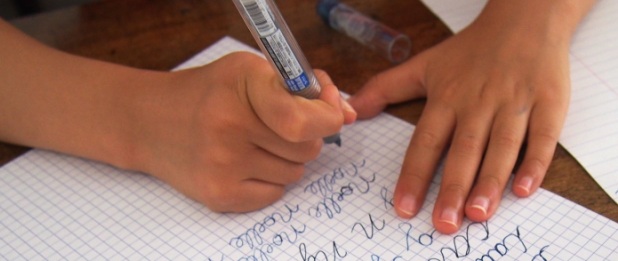As legislators debate the virtues of cursive handwriting instruction in our state, I know the virtue of cursive handwriting. I see it every time I open a card in sympathy after my mother’s passing. I read the words in a friend’s own hand and I am touched, encouraged by the gift of time and thought sent my way.
I realize I will miss my mother’s handwritten notes. Her cursive was clear, comforting and familiar. In fact, I saw her writing style in cards from others of her generation: They were instructed well in the art of cursive as the notes written six decades after their school days prove.
But is that all cursive instruction is good for—the personal touch? I don’t think so. And while corporate leaders of the 21st century push common core standards that trade cursive instruction time for other things like keyboarding in 3rd grade, neurologists with the technology of brain scans are saying that skipping cursive may not be so smart for our children’s development.
Of course, educators for a millennium have instructed their students to write down what is important, intuitively understanding that writing is thinking, intuitively understanding that writing is thinkingand the more senses we can bring into that thinking process—especially that of little ones—the more remembering and clarifying a student does.
According to a psychologist quoted in a 2014 New York Times article, a unique neural circuit is automatically activated when we write freehand. The article reports that children learn how to read more quickly when they first learn to write by hand and also remain better able to generate ideas and retain information.
While I’m no neurologist, I have taught in the development of reading and writing for more than 15 years at Cedar Tree. I have seen children learn to read by writing, then learn cursive to compose their thoughts and record the great thoughts of others with skill and beauty. Sure, they learn to type in upper grades, but their cursive continues all the way to high school graduation.
It’s their cursive writing that helps them remember and consider, and it’s their cursive writing that they can touch others with their entire lives.
Diana Meadowcroft is Cedar Tree’s Upper School Academic Director and teaches Humanities courses.






